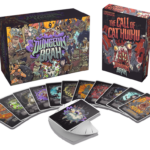 By Glenn Gillis, CEO, Sea Monster
By Glenn Gillis, CEO, Sea Monster
Brands have a long history of using games. In fact, the first branded game – a simple beer-pouring arcade game designed to promote Anheuser-Busch in bars in the UK – dates back to 1983. UK brands quickly started hiring developers to build bespoke games for marketing purposes. In 1984, for example, Weetabix released “The Muncher” for the Sinclair ZX Spectrum computer. The game required players to control a character called The Muncher, who had to eat Weetabix while avoiding obstacles.
The South African uptake of gamification for marketing purposes has seen a gradual increase, but in recent years has seen a rise in games being used by brands to drive customer engagement. The first video game developed in South Africa – Blastar, created by Elon Musk in 1984 – saw South Africa start to explore the world of games, and growth in the sector has since catapulted. The video games market in South Africa is now predicted to reach a revenue of $494.5m by the end of 2024, with the number of users in the country expected to reach 8.6m.
The rise of PC and mobile gaming, coupled with the development of the internet and wider access to in South Africa, has made it so much easier for brands to create games that people can repeatedly play in their homes, on their way to work and everywhere in between.
And things aren’t slowing down anytime soon. Gen Zs and Gen Alphas, many of whom have played some form of video game since they were toddlers, are fundamentally changing how we think about gaming and branded games in particular.

Ubiquitous gaming as a lifestyle
First, it’s worth looking at how ubiquitous gaming has become among Gen Zs and Alphas. According to research by Visual Capitalist, 90% of Gen Zs (those born between the mid-1990s and 2009) play games regularly. Among Gen Alphas (those born between 2010 and 2020), meanwhile, the number is even higher, at 93%. According to Newzoo’s Global Gamer Study 2023, Gen Alpha gamers are especially engaged, spending 22% of their entertainment time playing games, compared to Gen Zs who spend 19% of their time on games.
But games aren’t just another form of entertainment or bad-screen time for these young people. They’re part of a lifestyle and act as an avenue for learning, creating, socialising, and even taking part in events like virtual concerts. It should hardly be surprising therefore that, having been raised in a tech-centric environment, these two generations are also the most inclined to participate in gaming through alternative avenues. Some 72% of Gen Zs and Gen Alphas regularly watch gaming channels and indulge in game streamer content online, for instance.
How these younger generations approach games, and gaming, tells us a great deal about the sector’s future. But it also provides some insight into why brands and other organisations are looking to the gaming industry for a way to connect with a new audience.
Brands are tapping into the evolution of gaming as a lifestyle to foster a long-term affiliation with younger people who are natives to the world of games and gaming platforms. In doing so, we’ve seen brands launch marketing campaigns in existing game titles and even develop bespoke gaming experiences within platforms like Roblox, Minecraft and Fortnite in order to engage with young people where they are already congregating and spending time.
An evolving landscape
According to figures from Statista, 81% of the Roblox community – comprising 70+ million daily players and 196 million monthly active users – are under the age of 25. Nearly two-thirds of Minecraft players (162 million monthly players), meanwhile, are under the age of 21. One reason why young people flock to these platforms is because it’s where their friends and peers are. In effect, they have become a virtual third place, where young people feel safe outside the bounds of school and home to play, socialise and develop their unique virtual identities.
Beyond a third place, brands must also understand what young players want from these platforms and games in general. Research from GWI, for example, reveals that Gen Alpha primarily want games that have a sense of adventure and allow them to build things.
To use gaming platforms as yet another way to inundate people with meaningless ads and commercial content would be a missed opportunity. The real value in this space lies in creating gaming experiences that get young audiences to engage with your brand in a fun and meaningful way that feels authentic to your brand and suitable to the platform. Through this approach, gaming platforms can help brands effectively build a community, enhance customer loyalty and explore new revenue opportunities.
Games as part of the future marketing mix
With even young children spending an average of 38 minutes per day gaming, the case for using games as a means to reach young people should be clear. With nearly 400 branded activations on Roblox as of the beginning of this year, and hundreds more across other platforms, it is evident that brands across the world are recognising and capitalising on the immense potential of the gaming industry to capture the attention and loyalty of their next generation of consumers.
These days, it’s a given that every major brand has a presence across all major social platforms and, in the future, it could be a similar no-brainer for brands to establish and maintain a persistent presence in immersive virtual spaces and gaming worlds as part of the modern marketing mix.
- The BRC announces changes to the board and updates for 2025 - 17th December 2024
- Top 50 DSTV TV programmes – October 2024 - 12th November 2024
- Top 50 FTA TV programmes – October 2024 - 12th November 2024





